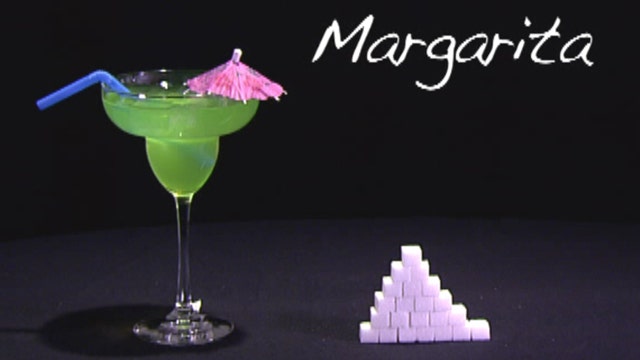When it comes to cocktails, it can be hard to know how much sugar you’re taking in.
The Treasury Department’s Alcohol and Tobacco Tax and Trade Bureau, which regulates most alcoholic beverages, has approved the use of nutritional labels on beer, wine and ready-to-drink mixed beverages. But the decision to provide information about serving size, calories, carbohydrates, protein and fat per serving is left to the discretion of the beverage company.
Some companies, including MillerCoors and Diageo, which owns popular brands like Tanqueray, Guinness and Smirnoff, offer nutritional information on some of their labels.
But some other companies are concerned that consumers might be turned off when they learn the truth about their favorite drinks. The California-based Wine Institute, which represents over 1,000 wineries and related businesses, said nutrition information “is not a key factor in consumer purchase decisions about wine," and a spokeswoman said the group was not aware of any wine producers planning to utilize nutrition labels.
This lack of information can make it difficult for drinkers who are trying to watch their carbs and calories.
Rachel Berman, a registered dietitian and director at About.com Health, thinks that even with labels, consumers will still have to be savvy shoppers to understand what they’re really getting in their drinks.
“I'm a fan of transparency when it comes to labeling the amount of calories in beverages. However, including nutrients like fat and protein may make it a bit tricky, since the presence of those nutrients may make alcohol look healthful,” she told FoxNews.com.
Bar drinks can also vary widely in calories and sugar content. For example, a Cosmopolitan (a favorite of any Sex and the City fan) made with a sugar-free mixer and only vodka can have as little as three grams of sugar. But a bartender using triple sec and cranberry juice can craft a Cosmo that contains about 12 grams. A margarita made from standard commercial mix, versus fresh limes, can have as many as 576 calories and 55 grams of sugar. That’s like eating three and a half Krispy Kreme glazed donuts.
Some people are surprised to learn that spirits like vodka, tequila and whiskey, while high in calories, contain no sugar or carbs. So it’s important to pay attention to the choice of mixers. Not surprisingly, a little juice or a splash of sugary soda can really add up.
Berman suggests sticking to the basics to avoid a sugar overload.
“A glass of wine, beer, or a spirit straight-up will be your best bets for a low-sugar beverage. It's typically what's added into your alcohol that contributes excess sugar and calories,” she said.
Wine and champagne are typically low in sugar – usually under 2 grams per serving. But watch out for the added sugar in spiked punches like sangria.
Beer – with zero grams of sugar – wins as the least sugary alcoholic beverage. But the calories can add up quickly if you’re really thirsty.
We’ve rounded up the some of the most sugary cocktails. Watch the video above. You might want to think twice before ordering a second round.





















